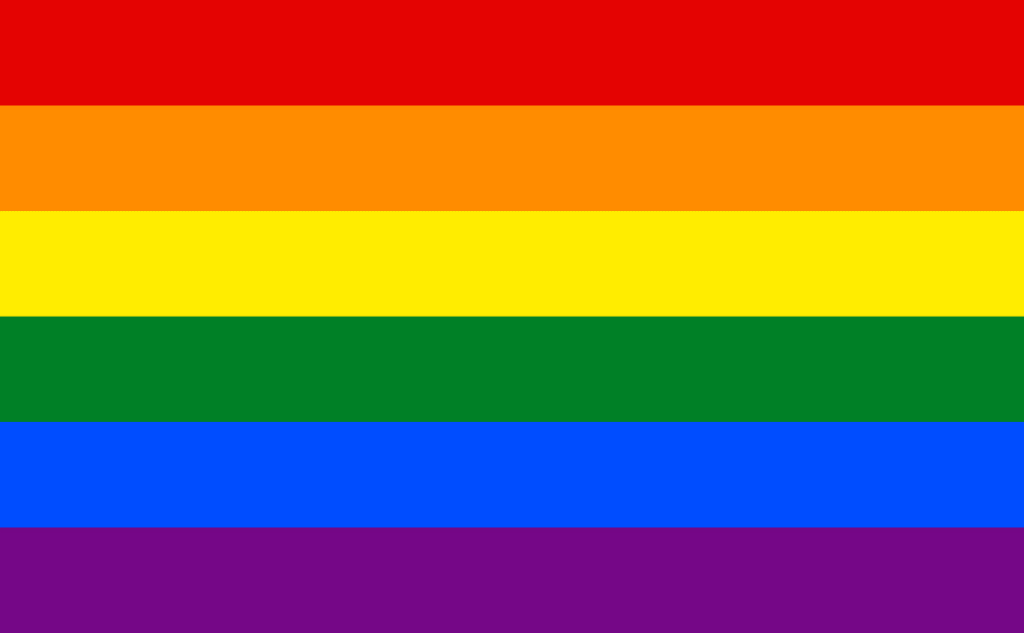
Queer love - is it different?
Text by Dimitrij Samoilow (Dimitri@psykologvirke.no) psychologist specialist and couples therapist
Pride: for acceptance and love for all
June is Pride month. We mark the freedom to be who we are and love who we want. It is the month where we truly celebrate acceptance and love for all. And the world moves forward. Queer love is now regularly depicted in films and television series. Homosexuals, lesbians and other queers who are young today have a model for queer love.
It has not always been this way. For those of us who grew up in the 70s and 80s, it caused a stir when a character in a TV series was queer. And often gays and lesbians were portrayed in rather strange ways.
Here at Psykologvirke, we are particularly happy that gay and lesbian couples seek us out when they are struggling in their cohabitation. This means that they value their love relationship and, not least, that they have confidence in us.
For us, it is important to be a service where all types of couples can get help, and that our clients are confident that they will be met with both acceptance and competence.
Is queer love different?
But how is this actually? Are same-sex relationships different from heterosexual relationships? If so, what are the differences?
The main finding in couple research is what we have always known: Love is love, and it is the same things that are important for the couple relationship, regardless of orientation or gender identity. The supporting beam is emotional contact, intimacy, commitment, security and room for play and exploration.
It also turns out that same-sex couples enter exactly the same vicious circles as heterosexual couples when the relationship becomes difficult. It tends to be one partner who seeks more closeness, leans forward and wants a change, while the other party protects themselves from shame and overwhelm by withdrawing further away, thus contributing to more insecurity and pressure from the partner.
And while the common perception has been that same-sex relationships are changeable and of short duration, we now have good data that shows that this is not the case. Same-sex couples also stay together over time and fight to keep their relationship. Today, they also create families, and it seems that children who have two mothers or two fathers grow up as secure as children in traditional heterosexual relationships.
But something is different for couples who belong to a minority.
Being a couple belonging to a minority
We celebrate PRIDE because pride is the opposite of shame. And shame is a feeling many queers have grown up with. In many people's upbringing, fear of rejection and being outside was a constant background music. Small comments, glances, and constant reminders of difference have been and are a constant stress factor in the lives of many queers. It is called for "minority stress", and it leaves a low-key alarm readiness and duration for rejection. Safety cannot be taken for granted.
The mass shooting during last year's Pride celebrations is a reminder that it is not just oversensitivity. The rejection music is still playing in the background. And we take some of that reality with us into the relationship. When the nervous system is constantly afraid of rejection, it can be more difficult to allow the openness and vulnerability that closeness requires.
The parties in same-sex couples are sometimes in different places when it comes to being open about their orientation, and not for everyone it is a matter of course that the relationship is valued by parents and siblings. We often don't think about it: how important it is that the generation above supports the relationships we establish. If the relationship is not properly acknowledged, then it creates considerable stress for the relationship. Because when those who have been closest to me throughout my life are skeptical of my lover, can I trust my own heart?
Queer love: the other side of the coin
The other side of the coin is that community, understanding and acceptance are easier to find when the parties have had similar battles to fight. Everyone has a story to tell about what it was like to "come out" as gay, lesbian, or with another gender identity, although it will be very different how this period of life has been for the individual. The shared destiny and the fact that there are no accepted truths about how a relationship should be is also a strength.
Couples researcher John Gottman describes that same-sex couples most often show more generosity and less hostility when they are in conflict. Both parties know how important acceptance and understanding are - so they are more willing to negotiate and manoeuvre, than heterosexual couples who have had their expectations, roles and norms imprinted with their mother's milk. Same-sex couples will also more often break norms that are taken for granted by heterosexual couples. Then there is more willingness to talk about sexuality and forms of cohabitation - and it is up for discussion whether one should imitate heteronormative relationships or find one's own paths. Gay men in particular have more often than heterosexual couples experimented with open relationships, different degrees of monogamy or cohabitation with more than one partner.
Same-sex couples are more open when it comes to negotiating tasks and roles. When two people of the same sex live together, gender roles can no longer be what determines how one behaves in cohabitation. It opens up greater freedom - but can also sometimes require greater negotiations.
With us, all couples are warmly welcome
In June we celebrate love in all its forms. The slogan of the association FRI is that "no one is free until everyone is free". That's probably true. As humans, we all long for both security and freedom. And in periods when it is difficult to reconcile these needs in their life together, or it is ailing for other reasons, Psykologvirke welcomes queer couples to expert help from some of the country's best couples therapists.








